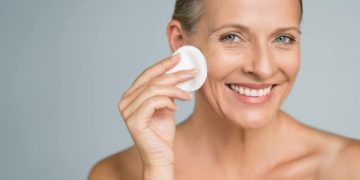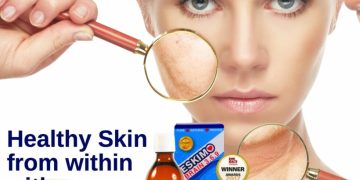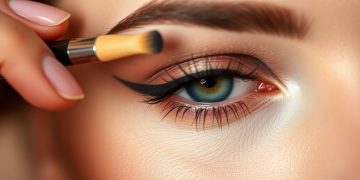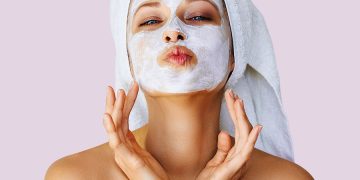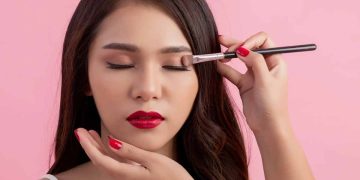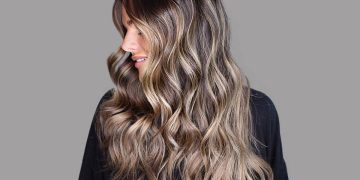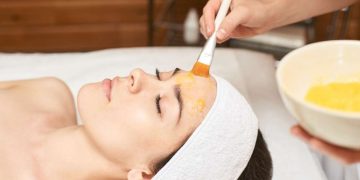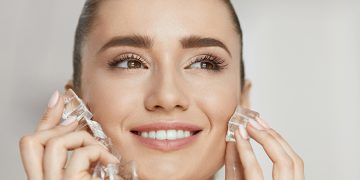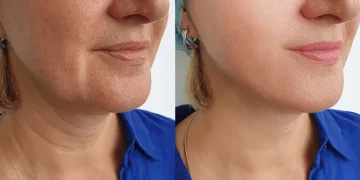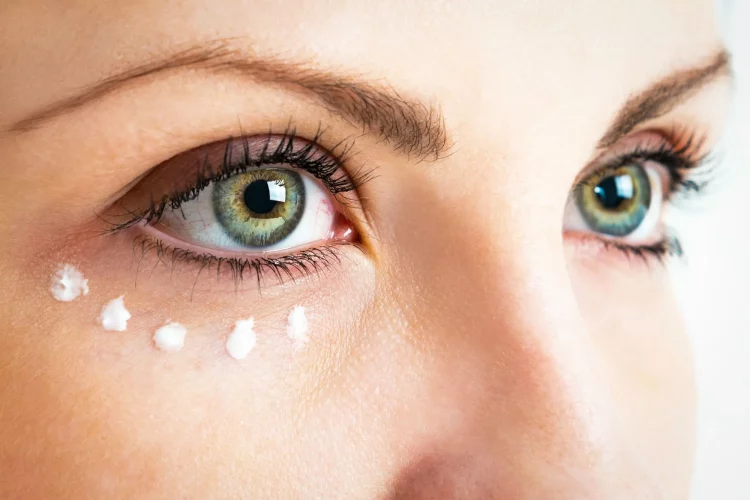Dark circles under the eyes are a common concern for many people, regardless of age or skin type. While they can be a natural part of aging, they can also be caused by various factors such as genetics, lack of sleep, stress, dehydration, allergies, and excessive sun exposure. Whether it’s the result of sleepless nights or simply hereditary, dark circles can make you look tired and dull, which can affect your overall appearance and confidence. Fortunately, there are various solutions and skincare products designed to treat and prevent these stubborn under-eye circles. In this guide, we will discuss effective ways to combat dark circles, from lifestyle changes to targeted skincare products.
1. Understanding the Causes of Dark Circles
Before diving into solutions, it’s important to understand what causes dark circles in the first place. Dark circles typically form due to the following factors:
- Thin Skin: The skin under the eyes is naturally thinner than the rest of your face. This makes the blood vessels underneath more visible, which can create a bluish or purplish hue.
- Poor Sleep: Lack of sleep can cause blood vessels to dilate, making the under-eye area look darker. Sleep deprivation can also lead to puffiness, which can exacerbate the appearance of dark circles.
- Allergies: Allergic reactions can cause the blood vessels under the eyes to dilate, leading to increased blood flow and a darker appearance in the under-eye area.
- Dehydration: When your body is dehydrated, it can lead to a sunken look under the eyes, which can enhance the appearance of dark circles.
- Genetics: Some people are genetically predisposed to dark circles due to inherited thin skin or pigmentation issues.
- Sun Exposure: Excessive sun exposure can increase melanin production, causing pigmentation to develop around the eyes, leading to darker circles.
- Aging: As we age, the skin loses elasticity and collagen, causing it to become even thinner. This can accentuate the appearance of dark circles, as well as fine lines and wrinkles.
2. Lifestyle Changes for Preventing Dark Circles
Before reaching for eye creams and serums, some lifestyle changes can help you prevent or minimize dark circles naturally.
Getting Enough Sleep
The most effective remedy for tired-looking eyes is adequate sleep. Aim for 7-9 hours of sleep each night to allow your body and skin to repair and regenerate. Resting gives your skin a chance to recover, reduces puffiness, and helps prevent blood vessels from dilating under your eyes. Creating a consistent sleep routine and practicing good sleep hygiene, such as avoiding electronics before bed and creating a calm sleeping environment, can improve the quality of your rest.
Hydration is Key
Dehydration is one of the most common causes of dark circles, so it’s important to drink plenty of water throughout the day. Aim for at least 8 cups (2 liters) of water daily to keep your skin and body hydrated. This can help reduce puffiness and prevent the skin from looking sunken and dull.
Reducing Stress
Stress is a major contributor to poor sleep and physical exhaustion, both of which can worsen the appearance of dark circles. Engaging in relaxation techniques such as deep breathing, meditation, or yoga can help alleviate stress. Consider adding these practices to your daily routine for better overall health and improved under-eye appearance.
Protect Your Skin from the Sun
The sun’s UV rays can darken the skin under your eyes by increasing melanin production. To prevent this, always apply sunscreen to your face and under-eye area, even on cloudy days. Choose a broad-spectrum SPF of at least 30, and make sure to reapply it throughout the day. Wearing sunglasses can also protect the delicate skin around your eyes from sun exposure.
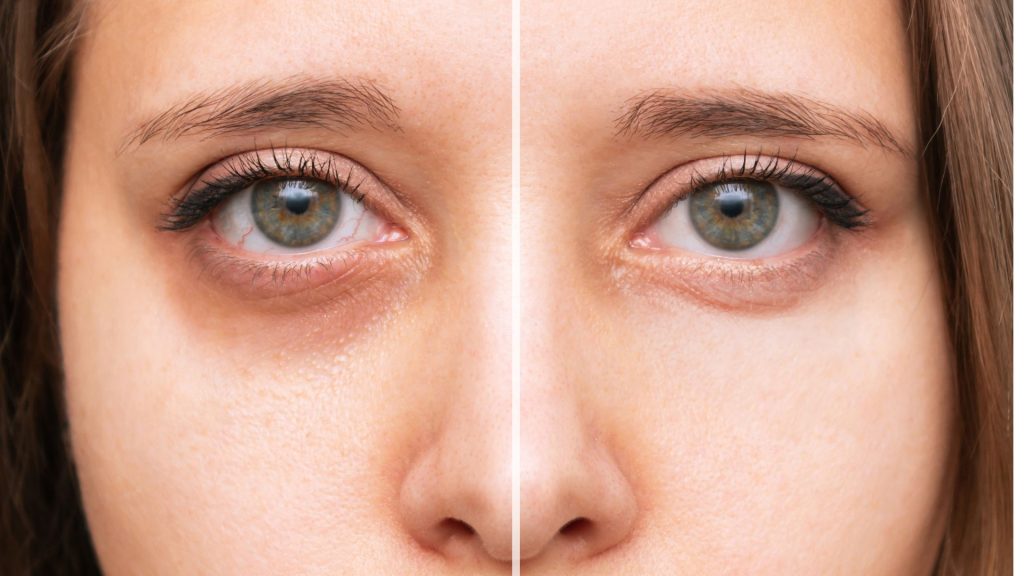
3. Skincare Ingredients for Dark Circles
Now that you understand the causes and preventive measures, let’s explore some of the most effective skincare ingredients to target dark circles. These ingredients can help treat the root causes, such as thin skin, pigmentation, and poor circulation.
Retinol
Retinol, a derivative of vitamin A, is a powerful ingredient that promotes collagen production and helps thicken the skin. By stimulating skin regeneration, retinol can reduce the appearance of dark circles caused by thin skin, and it also works to smooth fine lines around the eyes.
Caffeine
Caffeine is a popular ingredient in many under-eye creams because it stimulates blood flow and constricts blood vessels. This helps reduce the appearance of puffiness and dark circles caused by poor circulation. Caffeine also has antioxidant properties that can protect the delicate skin under your eyes from free radicals.
Vitamin C
Vitamin C is a potent antioxidant that helps brighten the skin by inhibiting melanin production. It also helps to strengthen the skin and promote collagen production. Vitamin C can lighten hyperpigmentation and reduce the appearance of dark circles caused by sun exposure and aging.
Hyaluronic Acid
Hyaluronic acid is a moisture-binding ingredient that helps hydrate and plump the skin. When applied to the under-eye area, it can reduce the appearance of dark circles by providing much-needed hydration and improving the skin’s elasticity.
Peptides
Peptides are amino acid chains that help repair and strengthen the skin. When applied to the under-eye area, peptides can boost collagen production and improve the skin’s structure, reducing the appearance of dark circles and puffiness.
Niacinamide
Niacinamide, also known as vitamin B3, is a powerful anti-inflammatory ingredient that helps reduce redness and puffiness. It also helps lighten hyperpigmentation and even out skin tone, making it an effective choice for brightening dark circles caused by sun damage or aging.
4. Best Eye Creams for Dark Circles
Now that we know which ingredients to look for, let’s explore some of the best eye creams and treatments specifically formulated for dark circles. These products target multiple causes, including puffiness, pigmentation, and skin thinning.
Best Eye Creams for Dark Circles:
- Kiehl’s Creamy Eye Treatment with Avocado: This nourishing eye cream is rich in avocado oil and helps hydrate the under-eye area while gently reducing puffiness and dark circles.
- Ole Henriksen Banana Bright Eye Crème: Infused with vitamin C and collagen, this eye cream brightens dark circles and firms the skin, leaving the under-eye area looking more awake.
- Neutrogena Hydro Boost Eye Gel-Cream: Formulated with hyaluronic acid, this lightweight gel-cream deeply hydrates the skin while reducing puffiness and dark circles.
- CeraVe Eye Repair Cream: This fragrance-free cream contains peptides, niacinamide, and ceramides to restore the skin’s moisture balance, lighten dark circles, and improve skin texture.
- L’Oréal Paris Revitalift Bright Reveal Brightening Peel Pads: These peel pads contain glycolic acid and vitamin C to exfoliate and brighten the under-eye area, helping reduce dark circles caused by pigmentation.
5. Home Remedies for Dark Circles
If you’re looking for natural remedies, there are a few at-home treatments that may help reduce the appearance of dark circles.
Cold Compress
Applying a cold compress to your eyes can help constrict blood vessels and reduce puffiness. Simply wrap ice cubes in a clean cloth or use chilled spoons and gently press them against your eyes for a few minutes. This can reduce swelling and temporarily lighten dark circles.
Tea Bags
Caffeinated tea bags are rich in antioxidants and can help constrict blood vessels under the eyes. Soak two tea bags in hot water, then place them in the fridge to cool. After about 10 minutes, lie down and place the cooled tea bags on your eyes for about 15-20 minutes.
Aloe Vera
Aloe vera has anti-inflammatory properties and can soothe the skin under your eyes. Apply fresh aloe vera gel to the affected area and leave it on for 10-15 minutes before rinsing it off with lukewarm water. Aloe vera can help moisturize and reduce inflammation, making it a great natural remedy for dark circles.
6. When to See a Dermatologist
If your dark circles persist despite your best efforts, it may be time to consult a dermatologist. In some cases, dark circles can be caused by underlying medical conditions such as allergies, eczema, or thyroid issues. A dermatologist can help diagnose the root cause of your dark circles and recommend advanced treatments like laser therapy, chemical peels, or dermal fillers.
Conclusion: A Multi-Step Approach for Bright Eyes
Dark circles can be a persistent problem, but with the right combination of lifestyle changes, skincare products, and home remedies, you can reduce their appearance and achieve brighter, more refreshed eyes. Prioritize good sleep, hydration, and sun protection to prevent further damage, and incorporate products with ingredients like caffeine, retinol, and vitamin C to target dark circles at the source. With patience and consistency, you’ll be well on your way to banishing dark circles for good.



